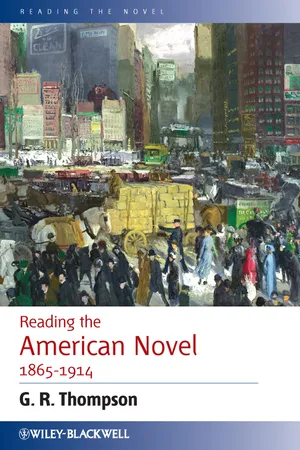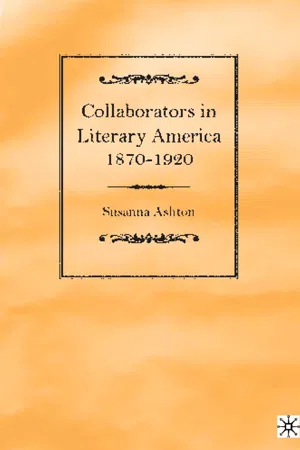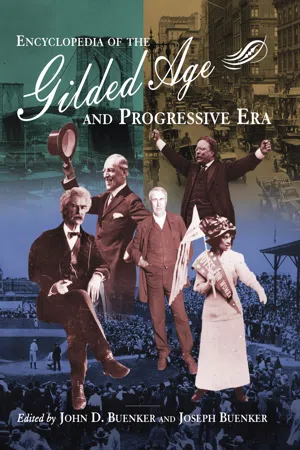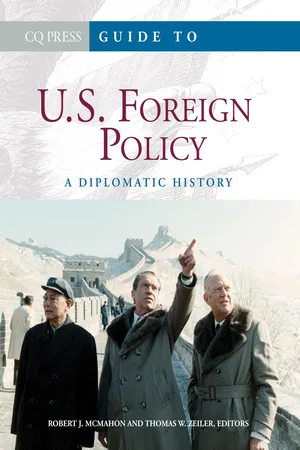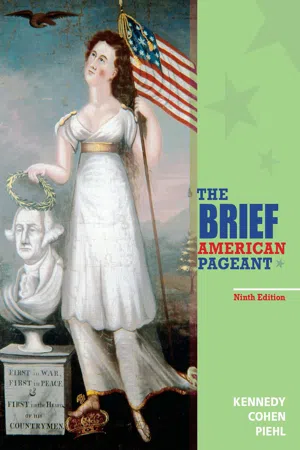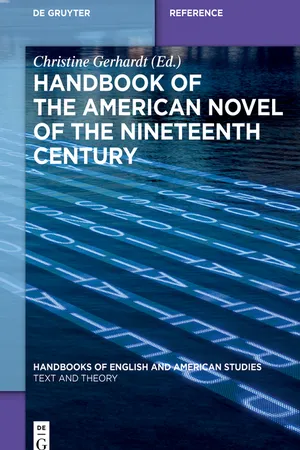History
Gilded Age Literature
Gilded Age literature refers to the literary works produced during the late 19th century in the United States, characterized by a focus on social and economic issues, industrialization, and the disparities between the wealthy elite and the working class. Writers of this period often critiqued the materialism and corruption of the era, offering insight into the complexities of American society during this time.
Written by Perlego with AI-assistance
Related key terms
1 of 5
8 Key excerpts on "Gilded Age Literature"
- eBook - PDF
The Industrial Revolution in America
Iron and Steel, Railroads, Steam Shipping [3 volumes]
- Kevin Hillstrom, Laurie Collier Hillstrom, Kevin Hillstrom, Laurie Collier Hillstrom(Authors)
- 2005(Publication Date)
- ABC-CLIO(Publisher)
Its art and literature reflected early Gilded Age society’s celebration of industrial and technological progress and the selfmade industrialists with their newfound fortunes. It also reflected late Gilded Age society’s growing uneasiness with some of the negative byproducts of such progress, such as the growth of slums, hazardous working conditions, political corruption, the rise of big businesses, and labor disputes. Although portrayals of average iron and steelworkers may have been rare, their shifting images provide a window into how Gilded Age American culture and society dealt with the rapid changes brought on by the Industrial Revolution. SOURCES Bishop, W. H. 1970. “StoryPaper Literature.” In The American Culture Series: Democratic Vistas, 1860–1880, edited by Alan Trachtenberg. New York: George Braziller. Blake, Fay M. 1972. The Strike in the American Novel. Metuchen, NJ: Scarecrow Press. Brettell, Richard. 1999. Oxford History of Art: Modern Art, 1851–1929. Oxford: Oxford University Press. Brodhead, Richard H. 1988. “Literature and Culture.” In The Columbia Literary History of the United States, edited by Emory Elliott. New York: Columbia University Press. Burns, Sarah. 1996. Inventing the Modern Artist: Art and Culture in Gilded Age America. New Haven: Yale University Press. Page 267V1 Butler, Joseph T., Wendell D. Garrett, Alan Gowans, and Paul F. Norton. 1969. The Arts in America: The Nineteenth Century. New York: Charles Scribner’s Sons. CohenSalal, Annie. 2001. Painting American: The Rise of American Artists, Paris 1867–New York 1948. New York: Alfred A. Knopf. Davis, Rebecca Harding. 1985. “Life in the Iron Mills.” In Provisions: A Reader from NineteenthCentury American Women, edited by Judith Fetterley. Bloomington: Indiana University Press. Denning, Michael. 1998. Mechanic Accents: Dime Novels and Working Class Culture in America, rev. ed. New York: Verso. Dietrichson, Jan W. 1969. The Image of Money in the American Novel. - eBook - ePub
- G. R. Thompson(Author)
- 2011(Publication Date)
- Wiley-Blackwell(Publisher)
Chapter 16 The “Gilded Age” Genteel Critics and Militant MuckrakersThe Gilded Age (1873) by Mark Twain and Charles Dudley Warner gave the Age of Big Business one of its most memorable labels. In American cultural history, the term “Gilded Age” invokes the period from the end of the Civil War through the 1890s, and slightly beyond. Associated with the rapid rise of Big Business are the Labor Movement, the Factory System, and the attempt of Corporate Capital (personified as the Robber Barons) to control it all – by violence if necessary. Within this time frame, political historians have identified other periods, most notably Reconstruction and the Progressive Era, terms embodying the contradictory tendencies of the times. But for most literary scholars and cultural critics, the “Gilded Age” is the label that has stuck.1The term emphasizes the problems and evils of laissez-faire capitalism. Gilded means covered with a thin layer of (usually) fake gold. In their comic Dickensian way, Twain and Warner strip away the pretty surface and expose the ugliness beneath the top layer of society, politics, and business. The word gilded also suggests American Victorian respectability and artifice, from the gilt-edges and decorations of fake books in simulated libraries, to elaborate gilded picture frames in over-decorated parlors, to insincere piety regarding personal behavior and business ethics.Novels of social criticism in the era generally took one of two forms: “genteel criticism” and “muckraking.” Among the Genteel Critics and historical romancers who sometimes cast a jaundiced eye on American manners, morals, and institutions are Henry Adams, Booth Tarkington, Winston Churchill, Robert Herrick, and W. D. Howells. The Muckrakers wrote both fiction and nonfiction in which they more militantly exposed the ugly underside of American capitalism and putative democracy. Important muckraking works include novels by Rebecca Harding Davis, John William De Forest, and David Graham Phillips; and journalistic exposés by Ida Tarbell, Lincoln Steffens, Jacob Riis, Thorstein Veblen, and Helen Hunt Jackson. The most famous of the American muckraking novels is Upton Sinclair's The Jungle - eBook - PDF
- S. Ashton(Author)
- 2003(Publication Date)
- Palgrave Macmillan(Publisher)
The Gilded Age was the first novel written solely for professional subscription sales in the United States. 1 Travel books, such as Mark Twain’s Innocents Abroad, had done extremely well via subscription 26 / collaborators in literary america, 1870–1920 publishing, as had nonfiction works such as encyclopedias and reference texts. Bibles, of course, had a long tradition of successful subscription sales. Yet, it wasn’t until The Gilded Age that a novel was constructed specifically for farmers and rural folks to purchase from door-to-door book agents upon a promise of later delivery. A novel that deeply criti- cized land speculation and the crassness of Western society was nonethe- less designed for a largely rural and incipiently populist market. Themes reflecting fears over investments, corruption, and participation in the democratic process were manifest both literally and figuratively in The Gilded Age. While we can trace these themes in the plot of the novel, we can also trace them through the way in which the novel was composed and sold. Analysis of the relationship between the innovative methods of subscription publishing and how such practice invoked the specula- tive problems figuratively probed in the novel demonstrates how under- standing historical practices of authorship shapes a reading of this novel. Twain’s Preface to the London edition of The Gilded Age suggests that duality is more than simple irony; it arises from the very basis of his contemporary culture: In America nearly every man has his dream, his pet scheme, whereby he is to advance himself socially or pecuniarily. It is this all-pervading spec- ulativeness that we have tried to illustrate in “The Gilded Age.” It is a characteristic, which is both bad and good, for both the individual and the nation. Good, because it allows neither to stand still, but drives both forever on, toward some point or other which is a-head, not behind nor at one side. - John D. Buenker, Joseph Buenker(Authors)
- 2021(Publication Date)
- Routledge(Publisher)
Other Gilded Age poets who deserve mention are Herman Melville, Sid ney Lanier, Stephen Crane, and, again, Paul Laurence Dunbar. During the Progressive Era, there were, in the genre of poetry, at least four key develop ments: (1) In Chicago, in 1912, Harriet Monroe founded Poetry: A Magazine of Verse. Appearing in early issues of this prestigious periodical were important, albeit minor, figures like Carl Sand- burg, Vachel Lindsay, Edna St. Vincent Millay, Edgar Lee Masters, Sara Teasdale, and Elinor Wylie. (2) Two major poets of the twentieth cen tury published landmark early collections: The Town Down the River (1910) and The Man Against the Sky (1916), by Edwin Arlington Robinson; and A Boy’s Will (1913) and North of Boston (1914), by Robert Frost. (3) From about 1909 to 1917, the Imagist movement flourished. Disen chanted with the loose emotion, preachiness, and abstract language of earlier verse, Ezra Pound, Amy Lowell, and H.D. (Hilda Doolittle), among others, advocated a poetry of common speech and concrete particulars. And (4) by 1914, some of the giants of twentieth-century modernism, such as William Carlos Williams and T.S. Eliot, had already begun to publish. El iot’s Prufrock and Other Observations appeared in 1917. Realism in Fiction Notwithstanding impressive works by poets and playwrights, the principal achievements of 138 Literature Enormously popular during his lifetime and a cultural icon ever since, the author, humorist, and lecturer Mark Twain coined the term “The Gilded Age” as the title of his 1873 satiric novel, coauthored with Charles Dudley Warner. (Brown Brothers) the Gilded Age and Progressive Era were made in fiction, more specifically in prose writings no table for their increasingly realistic portrayals of life. Critics have often noted that realism was the most important literary movement of the last half of the nineteenth century and that it was, in addition, a phenomenon most clearly manifested in prose fiction.- eBook - PDF
Guide to U.S. Foreign Policy
A Diplomatic History
- Robert J. McMahon, Thomas W. Zeiler, Robert J. McMahon, Thomas W. Zeiler(Authors)
- 2012(Publication Date)
- CQ Press(Publisher)
51 ★ b y N i c o l e M . P h e l p s c h a p t e r 4 The Gilded Age D uring the Gilded Age, the period from the end of the Civil War (1861–1865) through the mid-1890s, Americans were faced with dramatic changes that prompted many to recon-sider their place in the world and what it meant to be American. Mid-nineteenth-century technological innova-tions prompted dramatic economic growth and industrial-ization in the United States, and it also produced a strong interest in international trade. Industrialization, plus the end of slavery, prompted the development of new labor condi-tions. Domestically, those conditions produced a pro-nounced class system. Abroad, it produced a foreign policy that was remarkably close to imperialism, though instead of direct political control, U.S. leaders stressed the development of close economic ties, a process facilitated by a reinvigorated Monroe Doctrine, which claimed the Western Hemisphere as a zone of exclusive U.S. influence. In 1898, the United States became a formal empire, following the British exam-ple by strengthening its navy to guarantee its economic and political global power. Americans also embraced key aspects of the Great Power diplomatic system, expanding their dip-lomatic and consular presence overseas and participating in major international conferences and dispute resolutions. The key idea for Americans’ understanding of their position in the world during the Early National period was the antithesis between the New World and the Old, but in the Gilded Age, that idea was giving way to the concept of “civilization.” Rather than seeing themselves as the oppo-site of Europeans, many Americans came to see themselves as part of the same advanced culture and society as Europe, and the new antithesis was “barbarism,” which could be found among the lower classes and dark-skinned people around the globe. - eBook - PDF
The Brief American Pageant
A History of the Republic
- David Kennedy, Lizabeth Cohen, Mel Piehl, , David Kennedy, Lizabeth Cohen, Mel Piehl(Authors)
- 2015(Publication Date)
- Cengage Learning EMEA(Publisher)
Literature and the arts were not immune to the era’s sweeping changes. Confronted by new cities and industries, American writers and artists forsook the romantic senti-mentality of an earlier age and generated three interrelated currents in the arts: realism , naturalism , and regionalism . All three movements responded to the Gilded Age’s urban, industrial transformation. Realism quickly came to dominate post–Civil War American literature. Forego-ing romantic pageantry, American authors increasingly found their subjects in the coarse human comedy and material drama of the world around them. William Dean Howells (1837–1920), the celebrated “father of American realism,” emerged as the era’s preeminent advocate of unsentimental literature. A printer’s son from Ohio with limited formal education, he wrote his way into high literary circles of the East and in 1871 became editor of the prestigious Boston-based Atlantic Monthly . In his thirty-six novels, Howells wrote about ordinary people and about controversial social themes such as divorce and labor conflict. His most famous novel, The Rise of Silas Lapham (1885), describes the trials of a newly rich paint manufacturer caught up in the caste system of Brahmin Boston. Two recipients of Howells’s patronage and friendship—Mark Twain and Henry James—carried literary realism to new heights. With only meager schooling in frontier Woman’s Christian Temperance Union (WCTU) Founded in Ohio in the 1870s to combat the evils of excessive alcohol consumption, the WCTU went on to embrace a broad reform agenda, including campaigns to abolish prostitution and gain the right to vote for women. realism Mid-nineteenth-century movement in European and American literature and the arts that sought to depict contemporary life and society as it actually was, in all its unvarnished detail. Adherents eschewed the idealism and nostalgia of the earlier romantic sensibility. - Gregory Feldmeth, Christine Custred, Christine Custred(Authors)
- 2015(Publication Date)
- Research & Education Association(Publisher)
Chapter 8 Industrialism and the Gilded Age (1865–1898)The period between the end of the Civil War and the beginning of the 20th century is known as the Gilded Age. Mark Twain first used the term “Gilded Age” to describe the years after the Civil War. He saw rampant greed, materialism, and corruption dominating American political and social life and viewed the outward appearance of prosperity and gaiety as being nothing more than a thin coating of gold on a fundamentally flawed society.Politics of the Period, 1877–1882The presidencies of Abraham Lincoln (1861–1865) and Theodore Roosevelt (1901–1909) mark the boundaries of half a century of relatively weak executive leadership, and legislative domination by Congress and the Republican Party.The Compromise of 1877With Southern Democratic acceptance of Rutherford B. Hayes’s Republican presidency, the last remaining Union troops were withdrawn from the Old Confederacy (South Carolina, Florida, Louisiana), and the country was at last reunified as a modern nation-state led by corporate and industrial interests. The Hayes election arrangement also marked the government’s abandonment of its earlier vague commitment to African American equality.Republican Factions“Stalwarts” led by New York Senator Roscoe Conkling favored the old spoils system of political patronage. “Half-Breeds” headed by Maine Senator James G. Blaine pushed for civil service reform and merit appointments to government posts.Election of 1880In the 1880 presidential election, James A. Garfield of Ohio, a Half-Breed, and his vice presidential running mate, Chester A. Arthur of New York, a Stalwart, defeated the Democratic candidate, General Winfield S. Hancock of Pennsylvania and former Indiana congressman William English. Tragically, the Garfield administration was brief, as the president was assassinated in 1881 by a disturbed office-seeker, Charles Guiteau. Though lacking much executive experience, the stalwart Arthur had the courage to endorse reform of the political spoils system by supporting passage of the Pendleton Act (1883), which established open competitive examinations for civil service positions.- Christine Gerhardt(Author)
- 2018(Publication Date)
- De Gruyter(Publisher)
Martin Eden , 1909). In these novels, it is the idea of socialism that finally provides a liberation from the play of Norris’s “terrible things” (1964 [1896], 72). However, this was a prospect that did not survive World War I.Muckrakers and naturalist writers profited from a far-reaching transformation of the literary system that set in around 1890. New printing technologies decreased the costs of printing and led to a dramatic increase in book production that encouraged mass consumption. American book publication doubled in the period between 1890 and 1900. Genre formulas like the Western, the Science Fiction-story and a new kind of historical novel centered, in movie-like fashion, around ‘spectacular,’ exotic themes, become popular standard forms of mass culture. A new, entertainment-conscious kind of magazine, including an increasing number of photographs and advertisements (McClure’s , Munsey’s, Collier’s , Cosmopolitan , Saturday Evening Post , Ladies Home Journal ) begins to displace the ‘Quality Magazines’ of the Gilded Age . These new magazines favor a kind of literature that thrives on strong effects – just as the naturalist story or the muckraking story of social critique. But it is the short story that profits most strongly from the new magazines. With his skillfully calculated stories based on surprising plot twists, the writer O. Henry becomes a highly popular writer. Other writers discover the experimental potential of the genre (Stephen Crane, “The Open Boat”; Ambrose Bierce, “An Occurrence at Owl Creek Bridge”) and provide a foreboding that realism and naturalism will be rapidly replaced by modernism after World War I.6 Critical Reception
When the study of American literature was established as a separate discipline of its own after World War II, it was decisively shaped by the idea of an American exceptionalism. In order to justify a special focus on American literature, one had to claim that it was unique. Writers like Hawthorne or Melville proved perfect for that project. American realism, on the other hand, posed a problem. It did not concern itself with American symbols and myths, and its nineteenth-century versions fell short of a twentieth-century masculinization of realism as a ‘hard-hitting’ form of social criticism (Fluck 1991, 73). In its continued focus on the novel of manners and the courtship pattern, it appeared halfhearted and ‘genteel,’ that is, as a realism that was too tame and timid to go all the way.
Index pages curate the most relevant extracts from our library of academic textbooks. They’ve been created using an in-house natural language model (NLM), each adding context and meaning to key research topics.

